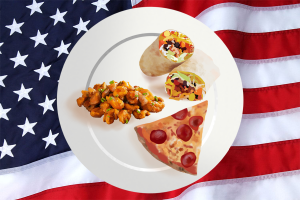The facts, fiction and fantasy of pseudoscience
May 31, 2019
Science and technology have evolved to be based on the logic and reasoning of the scientific method, a process used to observe scientific experiments in order to answer questions. Pseudosciences, on the other hand, are beliefs and practices that are mistakenly regarded as something based on logic, but their credibility relies on confirmation bias, the tendency to interpret information in a way that supports one’s preexisting beliefs, rather than the factual evaluation of scientists. However, many still continue to practice these methods of divination for entertainment, future knowledge and to understand themselves.
Astrology
Dating back to around 2000 B.C., astrology, the reading of the movements of celestial bodies, is one of the many pseudosciences that claim to predict human, social and terrestrial events. It is unclear as to who first used astrology to determine their fates, but many cultures have adapted various tales and interpretations of the astrological bodies. Ancient Chinese noblemen watched eclipses to predict good and bad times for the emperor to go to war, while Ancient Egyptians observed the patterns of how stars move across the sky year-round and made the Cairo calendar, which predicts fortunate and unfortunate days. However, it was not until 330 B.C. that the Greeks connected and refined these observations, forming the modern version of the 12 signs of the zodiac, each of them named after a constellation. In 1500 B.C., the Babylonians had already divided the constellations into 12 signs as well, each with their own names — for example, Leo (The Lion) and Libra (The Scales) to name a few — which were later incorporated into the Greek zodiac.
Zodiacs led to horoscopes, which are forecasts of a person’s future determined by their birth date. Currently, there are no scientific reports that support the accuracy of using horoscopes, or any pseudoscience, to determine one’s future, only that the predictions are based on pure chance. However, according to a Harris Poll in 2009, about 26 percent of Americans believe in astrology. The predictions are often vague and open to interpretation, which make it seem applicable to anyone. However, rather than constantly trying to refute the prediction, people who practice pseudosciences can easily convince people that horoscopes are accurate because the practice is often based on confirmation bias, which is prevalent in all pseudosciences.
Fortune Telling
Fortune telling has been dated back to 4000 B.C., and varying techniques were used by different cultures. Western fortune tellers tend to focus on finance, romance and childbearing, while Eastern fortune tellers use divination, the practice of fortune telling through supernatural means, to focus on match-making, marketing choices and fate. Popular forms of divination include tarot card readings, palm readings and readings of tea leaves.
In the late 18th century, tarot cards were used for divinatory practices, in which a special deck of cards with symbols were dealt and placed in a specific arrangement that the reader would use to interpret the future. Palm readings, developed during the Ming Dynasty in 1368, are based on the length and shape of the creases on the palm to determine a certain aspect of a person’s life, such as lifespan. Tasseography, the interpretation of patterns in tea leaves, coffee grounds or wine sediments, originated in medieval Europe when Europeans practiced the reading of ink and wax splotches. Dutch merchants, who brought tea to the Europeans, changed the way fortune tellers made their predictions. Tasseography evolved into tea leaf reading, in which a fortune teller determines aspects of a person’s fate by the patterns made by the tea leaves in his or her cup.
The crystal ball is another well known symbol of fortune telling. It first gained attention within the Roman Empire during the fifth century. Crystal gazing is the technique psychics use to see images inside the crystal sphere and interpret their meanings. The magic 8-ball, a fortune telling toy, is also a common symbol of fortune telling and did not gain popularity until the 1950s. The user asks the magic 8-ball a yes-or-no question, and then shakes the ball until dice with various sayings shows a random answer to the question.





























































Voyance • Mar 20, 2021 at 10:21 am
To know more about your future, you should visit a good website of fortune telling that covers all the subjects related to the future prediction’s : astrology, numerology and clairvoyance will help you to obtain the answers to the important questions you may have.
https://voyance-telephone-espoir.com